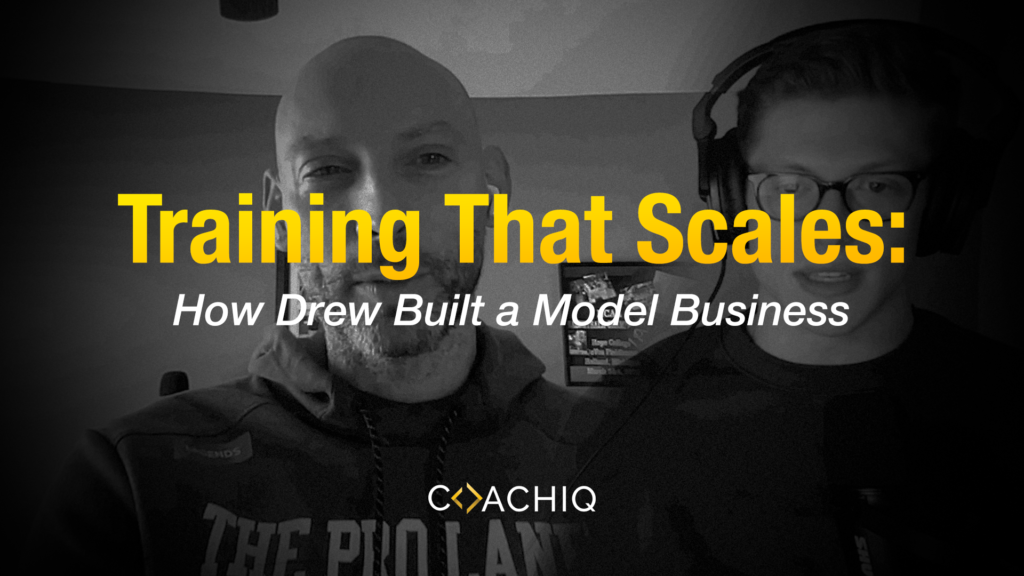
Does This Sound Familiar?
Your player looks like a superstar in practice—nailing drills, perfect footwork, smooth shooting form. Then game night hits, and everything changes. Suddenly, they freeze up under pressure, make rushed decisions, and can’t execute the way they did in training. If you’ve seen this, you’re not alone. This “practice-to-game gap” is one of the biggest frustrations basketball coaches face.
What’s Really Going Wrong?
The problem isn’t effort or commitment. It’s how we train. Old-school basketball drills—those perfect, scripted reps without defenders or pressure—feel good and look good on video, but they don’t prepare your players for what actually happens in a game. Real basketball is unpredictable. Players have to react to defenders, make decisions in tight spaces, and solve problems in real time.
Drew Dunlop, founder of The Pro Lane, puts it simply: “We’re not counting reps, we’re counting decisions. And in order for there to be decisions, there has to be bodies.” The real skill isn’t just in doing the move—it’s in choosing when and how to use it.
The Constraint-Led Coaching Revolution
Modern player development is shifting away from “perfect practice” and towards training environments that look a little messy but deliver true results. This is called constraint-led coaching. It’s about putting players in live, game-like situations that force them to read, react, and decide under pressure.
How do you do this?
- Use live defenders to create real pressure
- Add time limits so decisions must be quick
- Change up the space and pattern of the drill
- Combine multiple variables (size/number of defenders, rules, space) to make practice unpredictable and real
For example, try transforming training blocks into decision-rich environments through small-sided games. Sessions may look more chaotic, and your players (and parents watching) will see more mistakes. But that’s by design. Mistakes in practice are learning opportunities that build real, adaptable basketball players.
From Drills to Decision-Makers
What Transfers to Games
When practice mirrors the intensity and complexity of a real game, players learn to:
- Read situations and make decisions fast
- Adjust on the fly (change plans mid-play)
- Stay composed when things don’t go as planned
Instead of just “doing drills,” they develop the instincts and confidence needed when the lights are brightest. This development is echoed in CoachIQ’s approach to decision-making, where success is no longer measured by repetitions, but by authentic, game-like choices.
Ecological Dynamics and Basketball Skill
Drew’s philosophical shift came after studying ecological dynamics—the science of how skills emerge from interactions between the athlete, environment, and specific tasks. Instead of just copying movements, players learn to perceive and act, adjusting to whatever a game throws at them.
Practical Tips for Coaches: Making Constraint-Led Training Work
- Ditch Sterile Drills:
Make every drill “messier.” Use defenders, make the space smaller, add point systems, or put players under a shot clock. - Boost Decision Density:
The best sessions create as many meaningful decisions per minute as possible. Small-sided games, 2v2 with shifting rules, and time-capped challenges work great, especially when you track decision-making patterns and player progress over time. - Mix Skill Levels:
Train younger players alongside older ones when possible. Seeing and reacting to experienced players accelerates growth for everyone. - Prepare for Less Ball Time:
Remind players: the higher they go, the less the ball is in their hands. Train them to move, cut, and make decisions—with and without the ball.
Harnessing Tech for Smarter Training
At top programs like The Pro Lane, technology is becoming a game-changer. Using force plates and recovery monitoring systems helps coaches understand when players are truly ready to push, and when to pull back. Use this data to avoid burnout and injury—especially in demanding, decision-rich practices. CoachIQ’s platform is designed to help you optimize session planning.
Business Tips: Keep It Simple, Communicate Clearly
Growing a training business often means doing less, not more:
- Offer two focused programs—group and individual training. This simplifies your message and keeps the quality high.
- Teach parents and players early why practices look “messy”—because that’s what builds game-ready skills, not flawless drills.
- Curate your learning. Follow coaches and thinkers who turn complex theory into actionable advice. For help, explore the CoachIQ Help Center.
Key Takeaways
- Count decisions, not reps: Every drill should demand reading and adapting.
- Embrace the chaos: Real learning looks messy. Mistakes are part of progress.
- Mix groups: Put different skill levels together to raise everyone’s game.
- Use tech wisely: Let readiness and recovery data shape how hard you push.
- Keep it simple: Focus your programs and explain your methods proactively.
Ready to Upgrade Your Training?
- Start your next session with live defenders and a clock.
- Audit your old drills—where can you add more meaningful choice?
- Educate your players and parents about why chaos is a sign of high-quality practice.
- Explore performance tracking tech—even at a basic level—to guide your planning. CoachIQ’s platform makes it easy.
To learn more, listen to Mitchell Kirsch’s full conversation with Drew Dunlop on the CoachIQ Podcast. If you want players who rise when the game is on the line—not just in practice—constraint-led coaching is the path.

